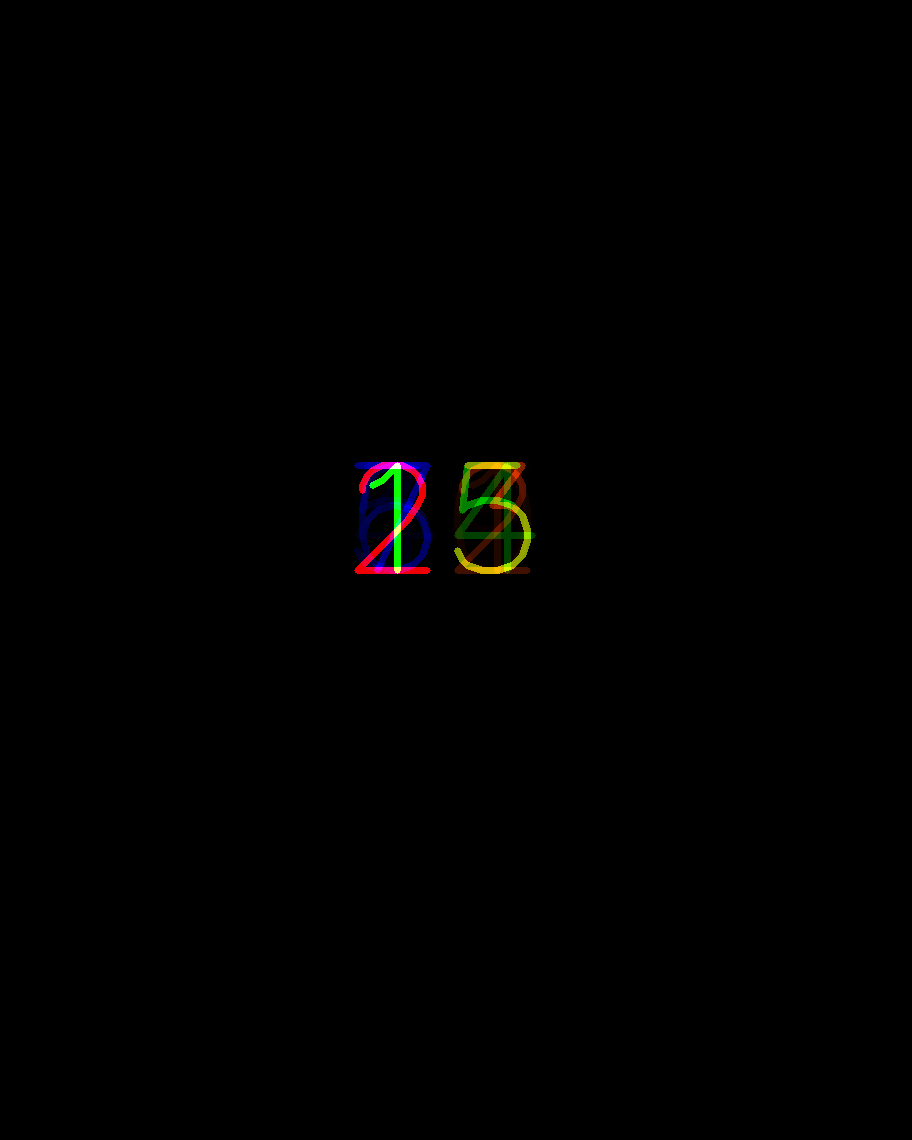Other Parts Discussed in Thread: DLPC350,
Hi,
We have a DLP4500-AFQD which is being driven by a custom board with a DLPC350 chip.
We are supplying a video signal into the LVDS port of the DLPC350 which is being sequenced onto the DMD.
One test we perform is to set the DMD into pattern streaming mode from the video port, and select only a single bit plane at a time (0, 1, .... through to 23) and ensure that we can see the image corresponding to that bit plane.
(The test image is something like this, where each bit plane has a different number in it, making it easy to see on the DMD).

This test typically works fine, but recently we have had a situation where we see nothing on the DMD when we select bit planes 0, 1, 8, 9, 16, and 17.
That is, when cycling through the bit planes, we can successfully see all numbers except 0, 1, 8, 9, 16, and 17.
In other words, it looks as if there are now only 6-bits for red, green, and blue.
Interestingly, it looks like the bit planes that are not visible are the first two bits of the red, green, and blue channels.
We have a hub in the system so that our video signal goes:
Laptop --> (USB3.0 Hub (USB-C connector) with HDMI port out) --> (Custom board for conversion from HDMI to LVDS) --> DLPC350 --> DLP4500
If we remove the Hub from the chain and go straight from Laptop --> (Custom board...) then we get the missing bit planes back.
In addition, we are testing a new custom PCB for connecting to the electrical pads of the DLP4500-AFQD part.
Questions:
1. could the Hub cause something like this? How?
2. could the new custom PCB for connecting with the DLP4500-AFQD cause this? How can we diagnose this? (perhaps some of the data tracks are degrading the signal?)
3. Does TI offer any PCB checking services e.g. to look over some of our custom boards to see if they are in spec?
4. In general, what can cause this problem?
Many thanks,
Oliver.

